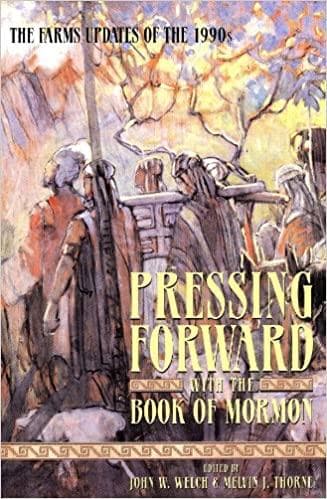Book
69 Chapters

“The Book of Mormon . . . contains a record of a fallen people, and the fulness of the gospel of Jesus Christ . . . which was given by inspiration, and is confirmed to others by the ministering of angels.” (D&C 20:8–10)
For well over a decade, FARMS has sponsored extensive research on the original manuscript of the Book of Mormon. About twenty-five percent of the pages that were written by Oliver Cowdery and other scribes as Joseph Smith dictated the Book of Mormon in 1829 have survived down to the present day.1 While much has been written and said about what the original manuscript is, perhaps even more significant is a collection of facts about what it is not.
Critics of the Book of Mormon have sought alternative explanations to account for its existence, arguing that it is a fraud created by Joseph Smith or by Joseph and someone else, such as Sidney Rigdon. However, the original manuscript gives no aid or comfort to such theories nor, indeed, to any explanations other than the account given by Joseph Smith concerning the coming forth of the Book of Mormon. Under careful examination, the original manuscript shows no evidence of fraud.
The original manuscript is not a compilation of pages worked on over a long period of time. The paper, ink, handwriting, and everything about the collection indicates that it was created within a short time frame. It bears no trace of collaborative committee work. The work is entirely original in its origination. The manuscript is clean and straightforward.2
The original manuscript shows no evidence of developmental research or copying from contemporaneous books or articles. It is not the product of revision and rethinking. It shows no evidence of rewriting to change a modern expression into an archaic-sounding phrase. It does not appear that Joseph Smith reformulated thoughts or reworked the translation to make it sound more plausible. Everything points to a uniform manner of dictation and production. It really looks like one person read and another copied, just as Joseph Smith described.3
What the original manuscript is not is quite impressive, especially when one begins to contemplate the number of problems that could have arisen if Joseph Smith had not been telling the truth. The original manuscript is exactly the kind of smoking gun that a prosecuting lawyer would normally love to find in trying to build a case of fraud or deception against an accused. How many mistakes, how many unavoidable problems, how many inevitable inconsistencies would not a prosecutor expect to find in such a document? The original manuscript of the Book of Mormon takes us into the workshop of the translator and his scribes; and much to the critic’s chagrin, what we see is what we have been told by Joseph Smith and his companions all along.
If Joseph Smith had perpetrated a fraud and were trying to cover his tracks, this unforgiving record should have been the last thing he would have kept. Yet Joseph Smith did not dispose of the original manuscript. Despite all the hardships and atrocities the Saints experienced in their travel, the original manuscript somehow survived, until it was deposited in the cornerstone of the Nauvoo House.
In the end, in addition to all the things that the original manuscript is not, it is certainly not a problem for the historicity of the Book of Mormon.
Research by John W. Welch, originally published as a FARMS Update in Insights (February 1998): 2.
1. See Book of Mormon Critical Text: A Tool for Scholarly Reference (Provo, Utah: FARMS, 1987), 1:xx.
2. See Royal Skousen, “Piecing Together the Original Manuscript,” BYU Today (May 1992): 18–24; Royal Skousen, “Book of Mormon Manuscripts,” in Encyclopedia of Mormonism (New York: Macmillan, 1992), 1:185–86; John W. Welch and Tim Rathbone, “Book of Mormon Translation by Joseph Smith,” in Encyclopedia of Mormonism, 1:210–13.
3. See Royal Skousen, “Translating the Book of Mormon: Evidence from the Original Manuscript,” in Book of Mormon Authorship Revisited, ed. Noel B. Reynolds (Provo, Utah: FARMS, 1997), 61–93; and Royal Skousen, “Textual Variants in the Isaiah Quotations in the Book of Mormon,” in Isaiah in the Book of Mormon, ed. Donald W. Parry and John W. Welch (Provo, Utah: FARMS, 1998), 369–90.
Book
69 Chapters
Items in the BMC Archive are made publicly available for non-commercial, private use. Inclusion within the BMC Archive does not imply endorsement. Items do not represent the official views of The Church of Jesus Christ of Latter-day Saints or of Book of Mormon Central.